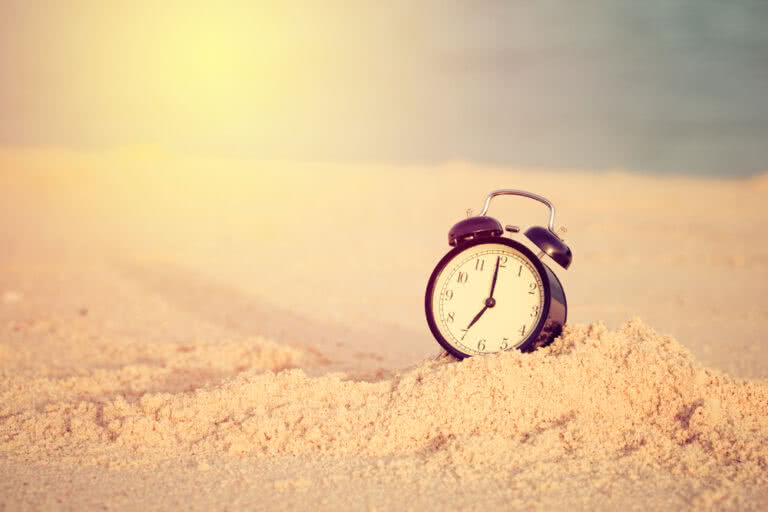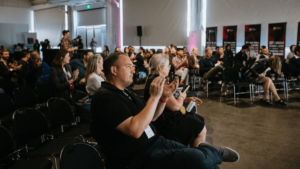Knowing when and where to stage your event is often tricky. How far will people be willing to travel? Is it best to choose a weekday or a weekend and what time of year is most advantageous? Being able to answer these questions can help you to maximise attendance at your events.
Although it is not always possible to predict people’s preferences or actions, there are a number of data sources you can refer to to assist you when making these important decision.
If you’re in the early stages of planning, here are four actions you can take to help you choose the right time and location for your event…
- Check your website’s Google Analytics
The first question to answer is ‘where are your customers located?’ If you have an established website, which you use to promote your events and sell tickets, this can be a goldmine of information.
Hopefully you already have Google Analytics installed on your website – if not, check out our article and why you should and how to go about it. Via your Google Analytics dashboard (in the Audience section) you will be able to see geo location data showing where your site visitors are based.
Google Analytics determines locations from a visitor’s IP address and provides a number of geographical dimensions, such as City, Region, Country. It’s pretty accurate but do bear in mind that if visitors are connecting via a VPN it can provide inaccurate location data so it’s not totally fool proof.
On the whole, however, you will get a good idea where your site visitors are coming from and you can also look at conversion rates by geographic location. Did a large percentage of people who bought tickets to your last event come from an area outside of the event’s location? In which case, maybe you could gain greater numbers of attendees by holding the event closer to them?
Are you getting lots of site visitors from the north of England but not converting them because your events are down south? Perhaps it’s time to consider staging your events in multiple locations to make them accessible to people in both regions? The data you glean from Google Analytics can also help you plan and measure the effectiveness of your marketing, so be sure to exploit it.
Related: Ways to double your ticket sales in 2016
- Pull down reports from your Eventbrite dashboard
Another place to gain valuable data about your customers is your Eventbrite dashboard. If you have held an event previously, you can download an ‘Attendee Geography’ report, which will show you on a map where people who bought tickets were based.
Using this information, you can surmise where any repeat event might be best located. You can also identify opportunities for expansion and growth – if your last event was held in Cardiff and saw lots of people travelling up from Bristol to attend, but also enjoyed strong local patronage, it could pay to run your event in both locations.
Equally, if you have ambitions of going global with your event, tracking ticket-purchasing data over several years allows you to see how your event’s reputation and pull is growing. Once people start coming from other countries to attend, for example, is a good indication of whether you’re ready to enter new territories.
Related: How to sell more tickets with analytics
- Send out a survey
One of the best ways to know when and where your customers would like your events to take place is to ask them!
Ask your previous attendees about their preferences by sending out a post-event survey. This is easy for Eventbrite customers, who can integrate their event with Survey Monkey or Survmetrics to quickly import attendee email addresses.
Create a short survey, asking how convenient they found the last event’s location, venue, day and timing and any recommendations they would make for future events.
Use their responses in combination with your analytics data to chose a time and place that suits repeat customers, but doesn’t squander the opportunity to attract new ones.
Related: How to send a survey to attendees
- Look at the research
Seasoned event organisers will tell you there are optimal days and times for different types of events, but in addition to conventional wisdom, there are a number of studies to help pinpoint ‘sweet spots’.
For example, according to a recent study conducted by online scheduling service WhenIsGood, the best time to call a meeting is on a Tuesday at 3pm. It found this was the day and time combination that enjoyed the most acceptances after analysing 100,000 responses to 34,000 meeting requests sent by WhenIsGood users.
Conversely, the worst time to plan a meeting is at 9am on a Monday. Then, just one in three people will readily accept, compared with about half for an afternoon meeting.
Meanwhile, Webinar Success surveyed people about their preferred time to attend a webinar and found Thursday afternoon was most favoured. Tuesday and Wednesday afternoons were also voted popular times. On the other hand, Monday mornings, Friday afternoons, and all evenings scored extremely negatively.
Doorkeeper, a Japanese events platform, studied 10,000 events and found that events held on a Monday got the most registrations (75% of seats are filled), while those held on Saturday got the least (66% of seats filled), however it didn’t break it down by event type (business events on the weekend are always going to be unpopular).
See if there’s any research into the best times for the type of event you’re organising, and, if you’ve held events previously, don’t forget to check your sales data in your Eventbrite dashboard.
Analyse the logistics of the events that sold the most tickets. And, if you hold events regularly, try a spot of A/B testing to see which time/day combinations garner the best results.
Related: How to decide when to launch your event
Conclusion
Approaching your event planning in an analytical way and exploiting all data at your disposal can lead to better attended and more profitable events. Don’t leave it to chance because success rarely happens by accident!





